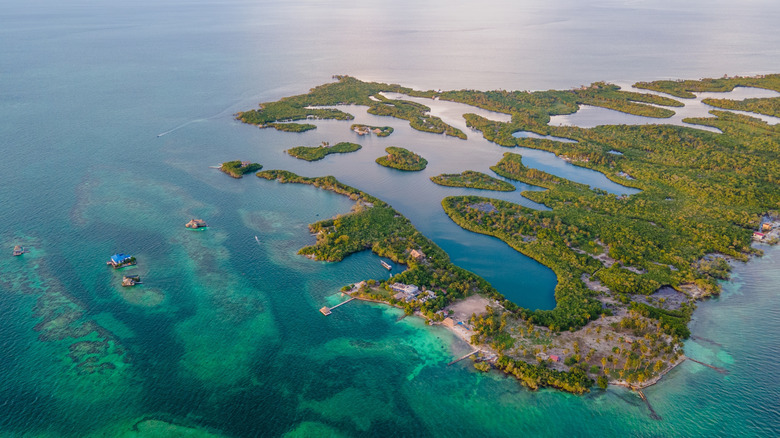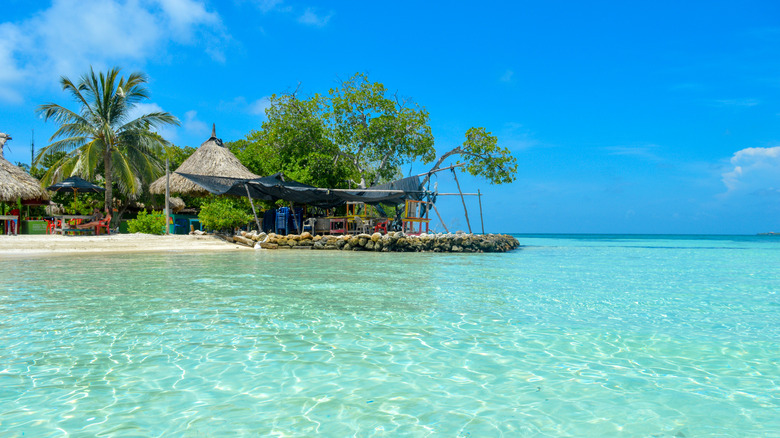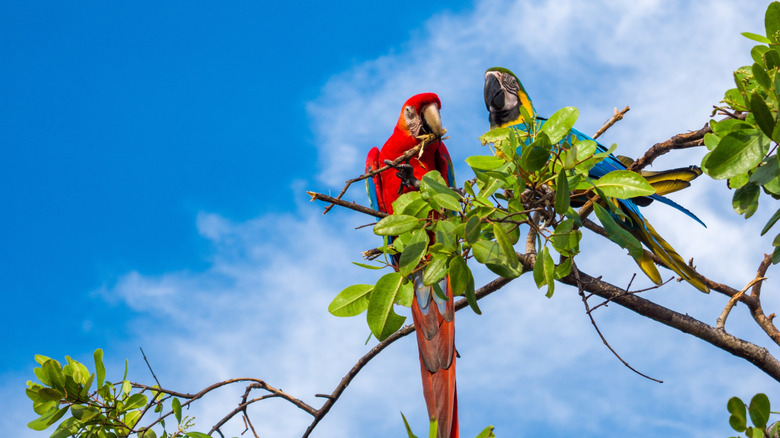A Secret Colombian Island Offers Pristine Caribbean Beach Beauty Without Big Tourist Crowds
While it's not unusual to see headlines touting Colombian Caribbean islands as hidden gems or well-kept secrets, none of them come close to the archipelago of San Bernardo. Its crowning jewel, Isla Mucura, is a pristine paradise of soaring palms and snowy white beaches.
Reaching Isla Mucura is an adventure in itself. The most common route to reach the remote isles is from just outside the fortified walls of the Old City of Cartagena. Book a boat transfer ahead of time through Hotel Isla Mucura for easy transportation. While this option saves you the need to leave the city, the journey itself takes more than two hours and can be arduous.
If you prefer to spend less time rocketing over the high waves on a small speed boat and more time exploring Colombia's golden coastline, take a slightly more challenging but far more scenic route. From the international coastal hub of Cartagena, a tropical escape on the Caribbean coast, you'll need to travel just 86 miles south to the small town of Santiago de Tolu. From here, it's easy to find a tour salesman touting tickets for boat rides to the islands. Note that you cannot bring more than 18 pounds of luggage with you on the boat, but don't worry — you won't need more than your beachwear on the tropical haven.
Roam between the palms and explore the underwater world of Isla Mucura
Washing onto the ivory shores of the far-flung Isla Mucura, travelers feel an instant sense of isolation from the rest of the world. Towering palm trees punctuate the slight slope of the green island, the sporadic swaying hammocks serve as beds for many of the overnight guests, and the pastel waters lap gently over the soft sands. While Barú Island is an idyllic tropical paradise of white and pink sands, it is bustling with tourists and island vendors scouting for easy prey. Meanwhile, at Isla Mucura, you can get all the paradisical perks of a Colombian Caribbean island all to yourself.
Despite its small stature, there are plenty of activities to keep travelers entertained on Isla Mucura. Grab your snorkel and glide beneath the waves — the entire archipelago is situated within the Corales del Rosario and San Bernardo National Natural Park, and the marine life is abundant, underlaid by a colorful web of coral. Carefully follow expert tips on how to safely snorkel around coral reefs and keep an eye out for the sharp urchins prevalent along the coastline, as strong currents can pull snorkelers down onto their spines. Alternatively, you can rent a paddleboard or kayak and explore the seas and hidden parts of the coast.
Back on land, most of your time is spent lounging shoreside or drifting in a breeze-swept hammock. Yet, if you have trouble sitting still, pop-up games of soccer and volleyball are common. Players commute from the nearby remote islands to play at the Hotel Isla Mucura grounds.
Venture out to the other islands in the San Bernardo archipelago
Though it may seem like a burden to drag yourself away from the blissful shores of Mucura, the other islands scattered through the archipelago are worth embarking on a day trip. Aside from Mucura, the most tourist-friendly destination is Isla Tintipan. Wider and wilder than its neighbor, Titipan's thick forests enshroud more wildlife than can be found on Isla Mucura. Keep an eye out for colorful macaws perched high in the trees. The island is also home to low-growing mangroves, and snorkelers can spot the vast sea of coral encroaching on the plants.
Tours set out from either island to Santa Cruz del Islote. This isn't a tourist destination in the traditional sense; its shores are artificial and don't boast the pristine beaches of its neighbors. The vibrant local life has developed in relative isolation, even though it's the most densely inhabited island on earth. On a tour from Mucura, a local will guide you through the slim streets of the labyrinthine center, pausing only to dodge flying soccer balls from the impromptu games.
Though not actually an island, one other attraction draws tourist crowds to the archipelago. Casa en el Agua is a floating thatched house that drifts close to Mucura and serves as a hostel. The bar there is always busy, the music is often blaring, and the party rarely sleeps.


